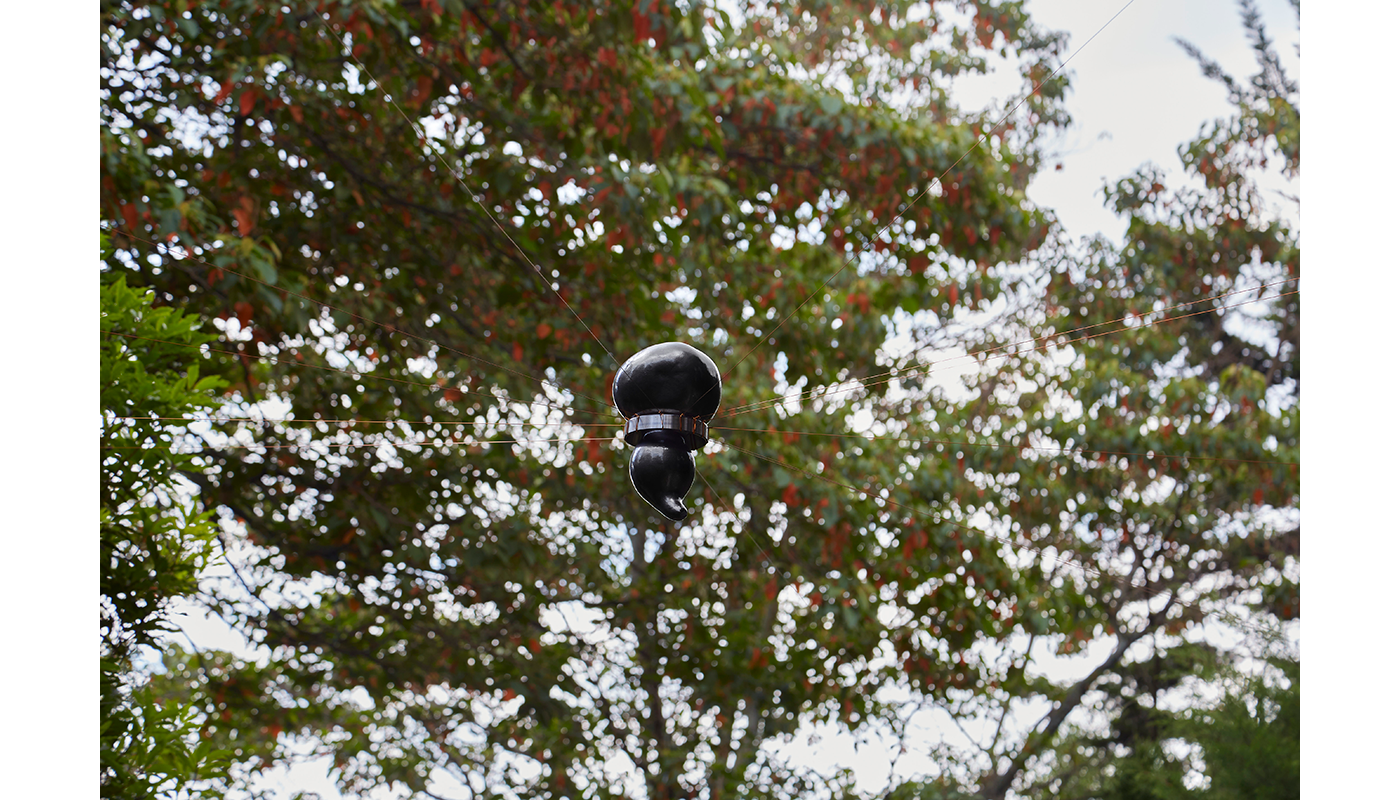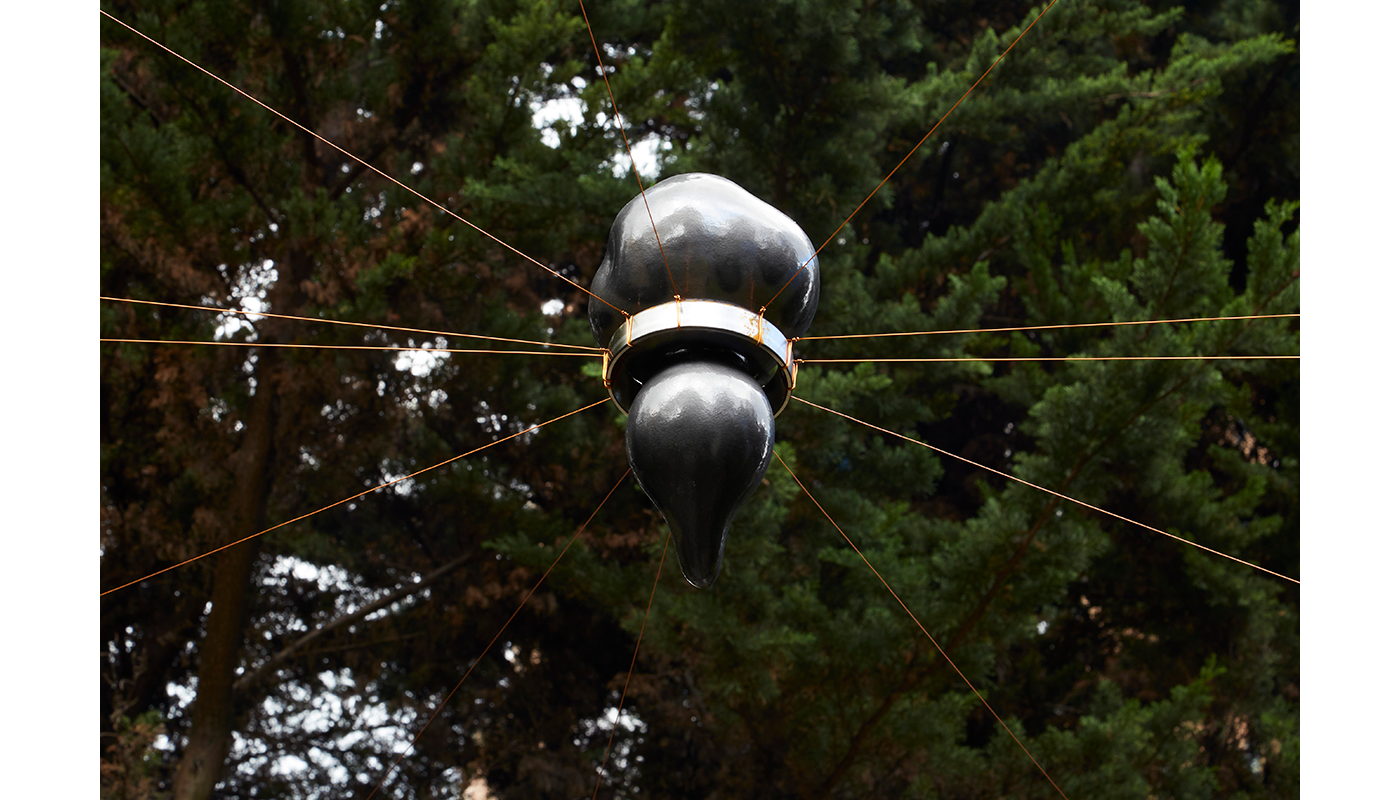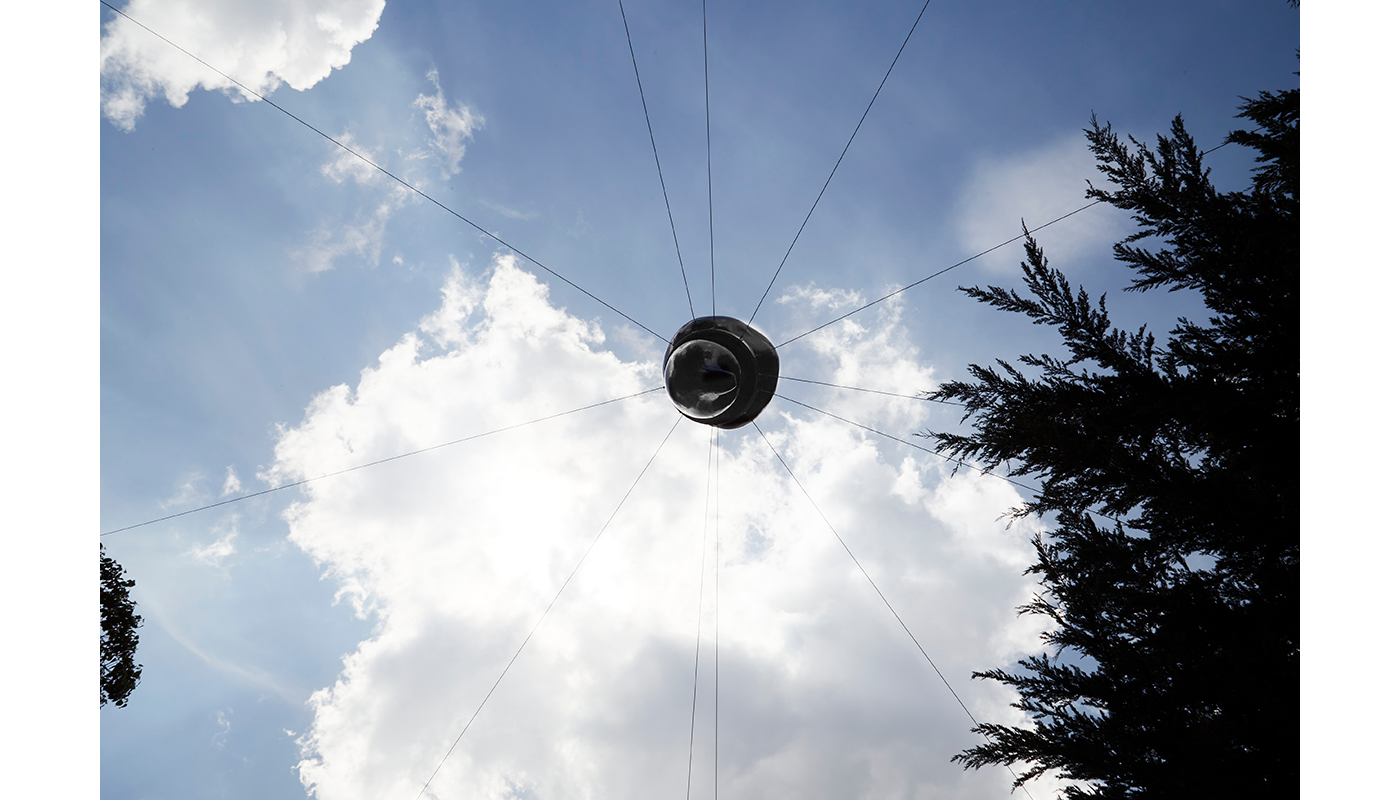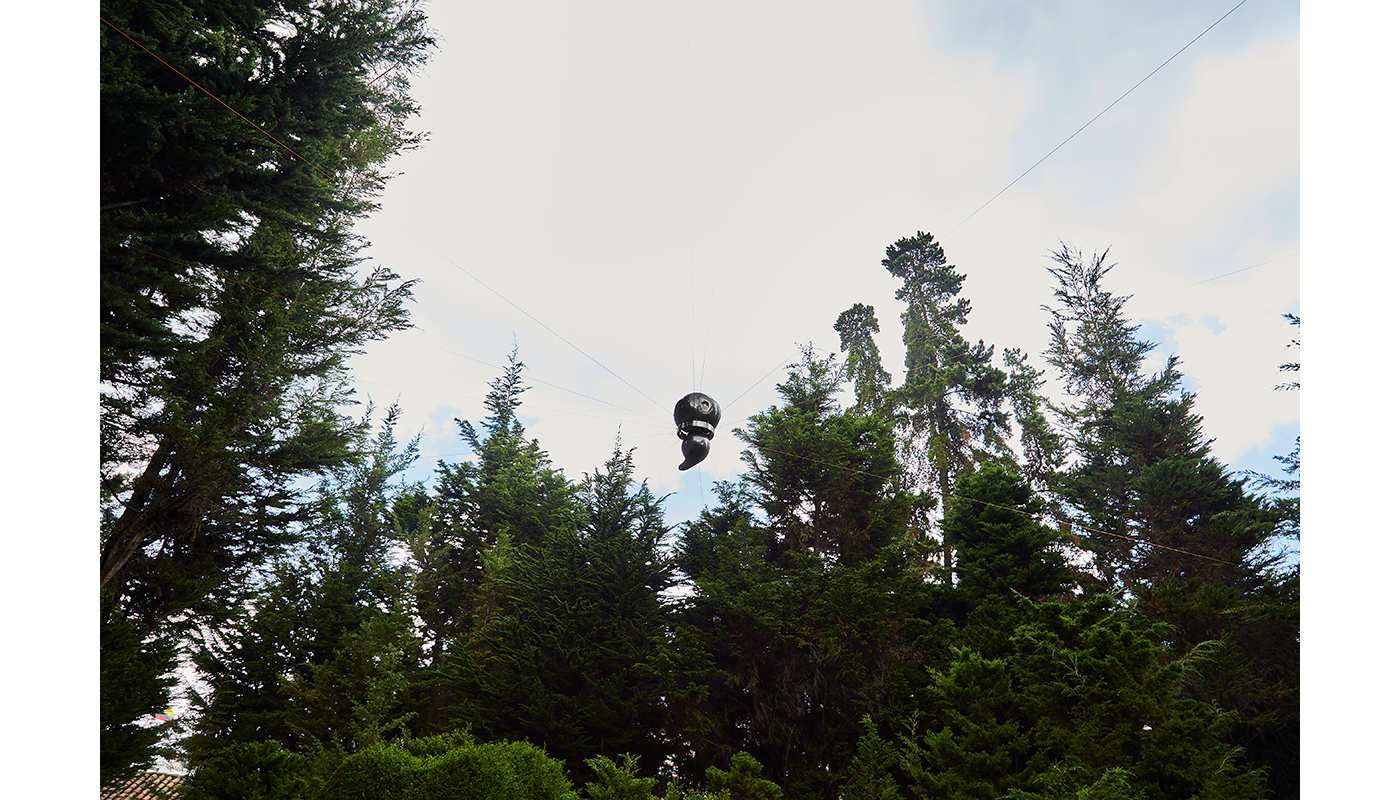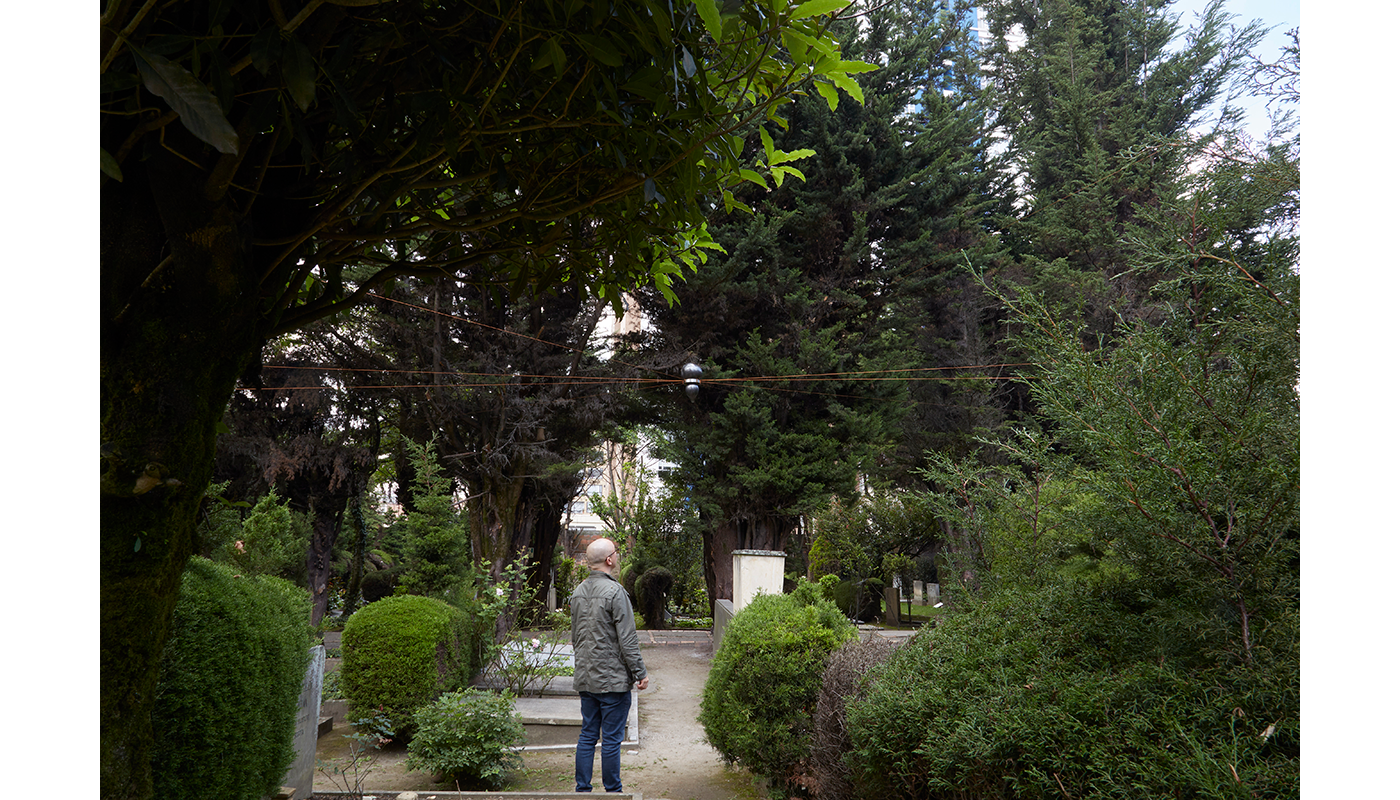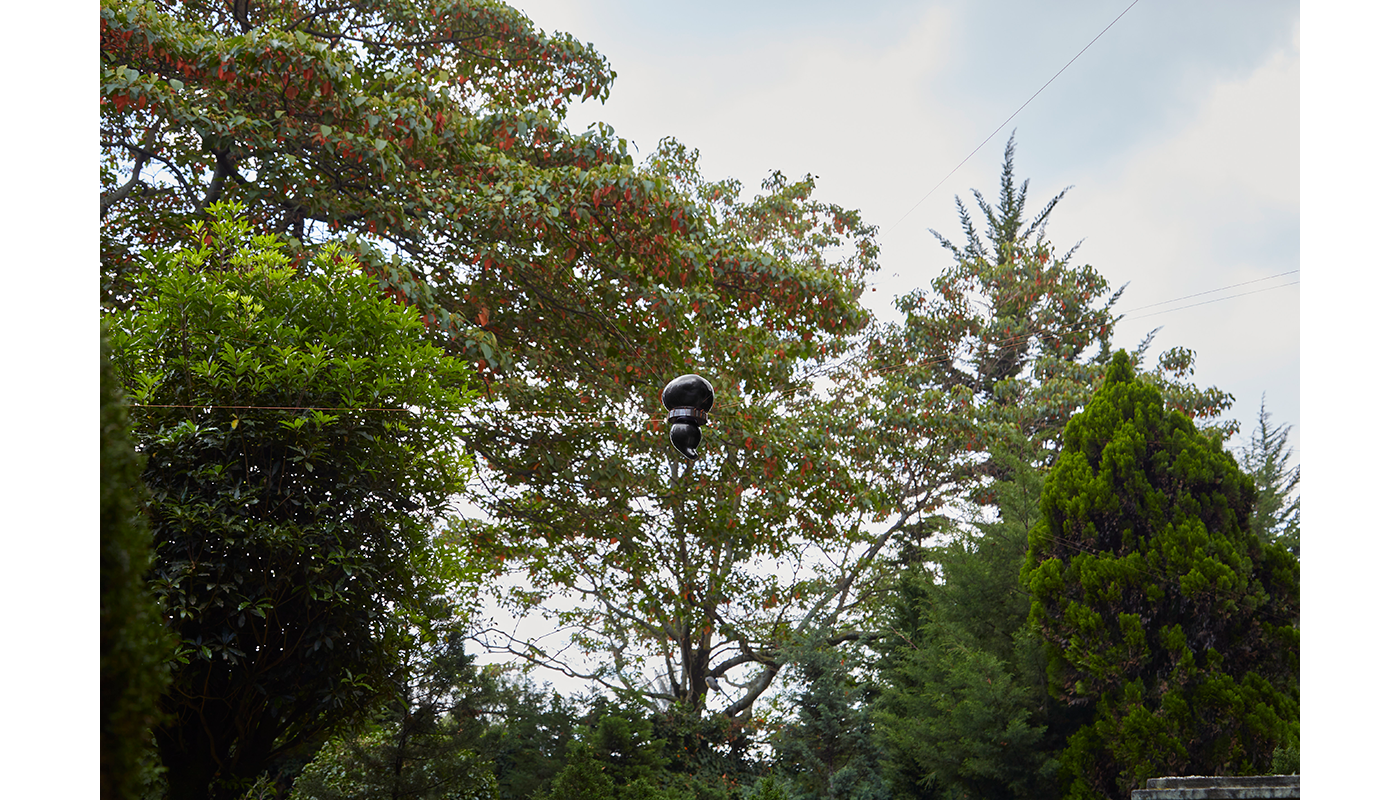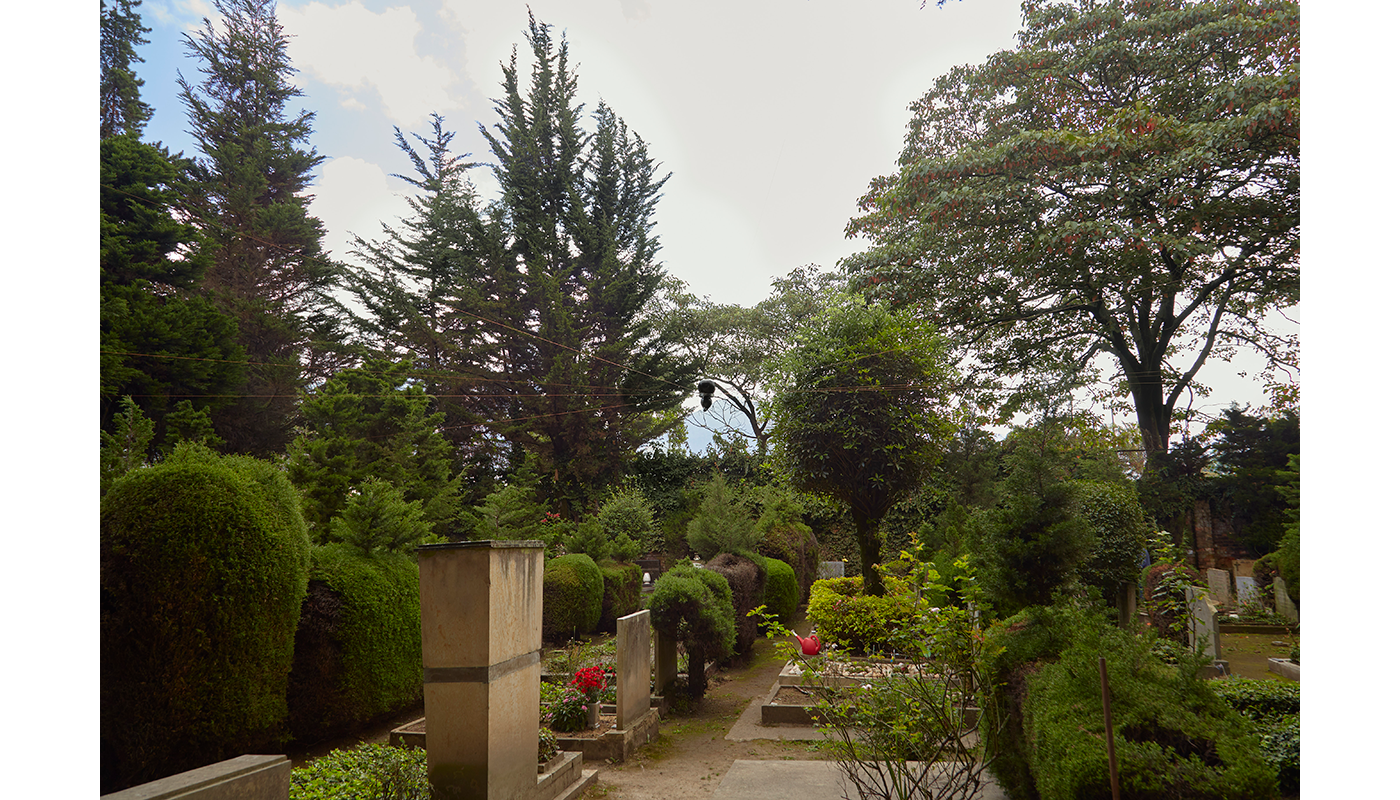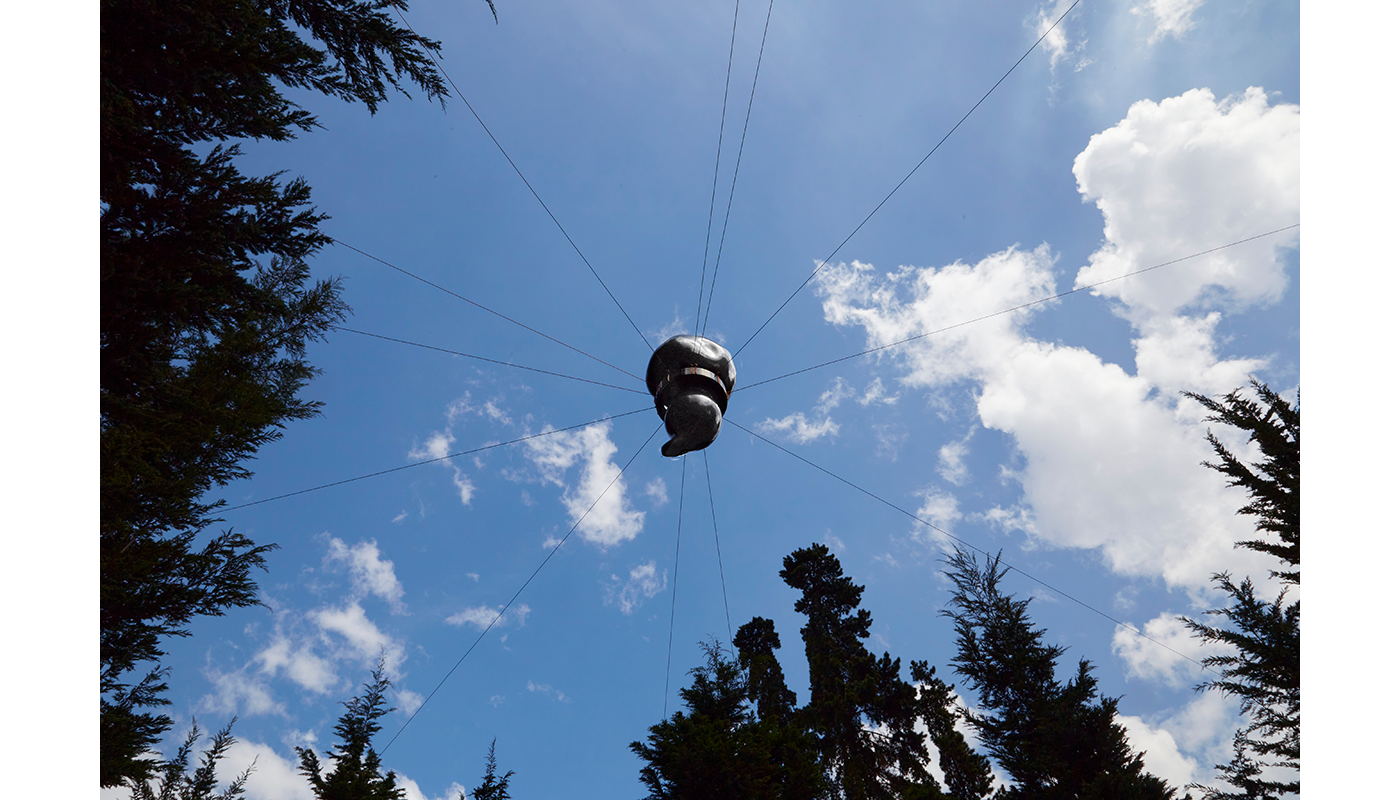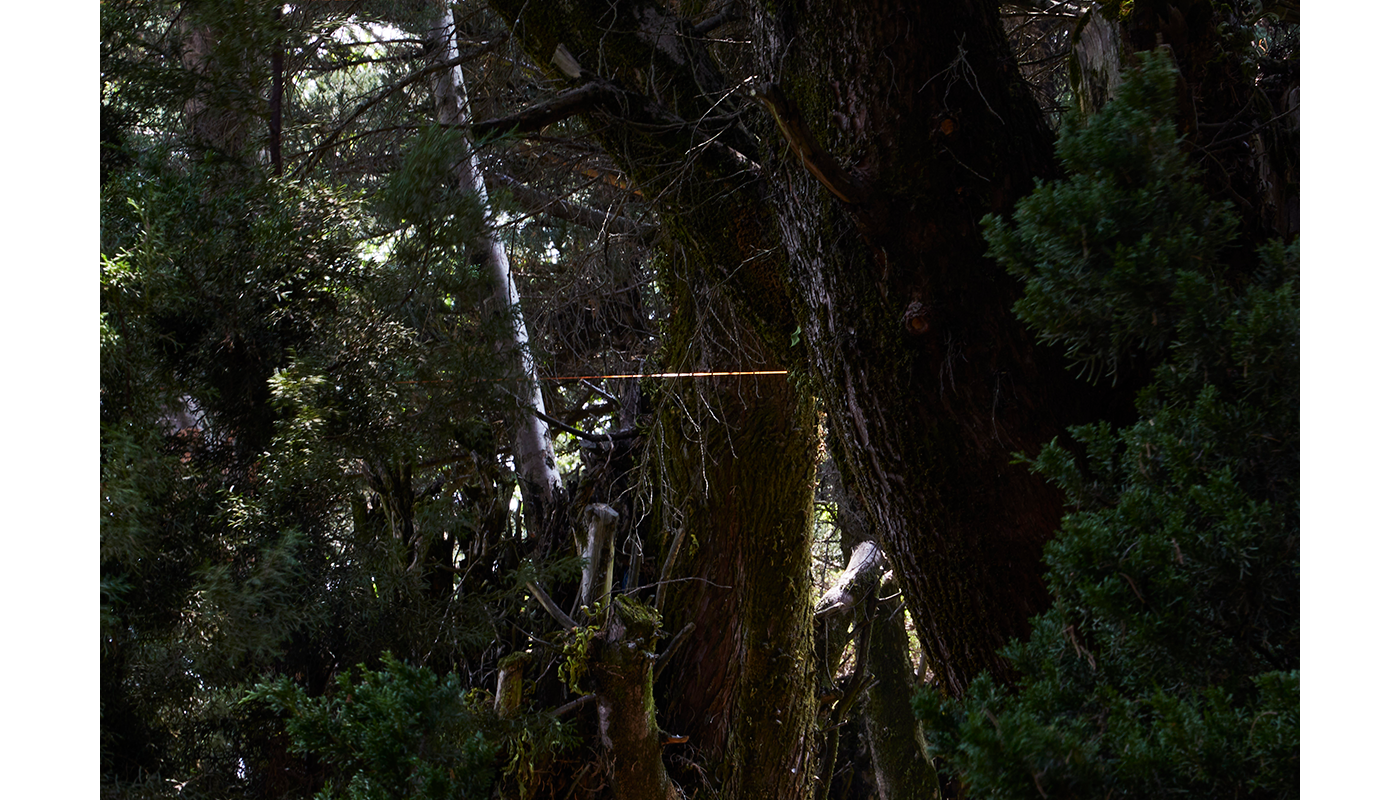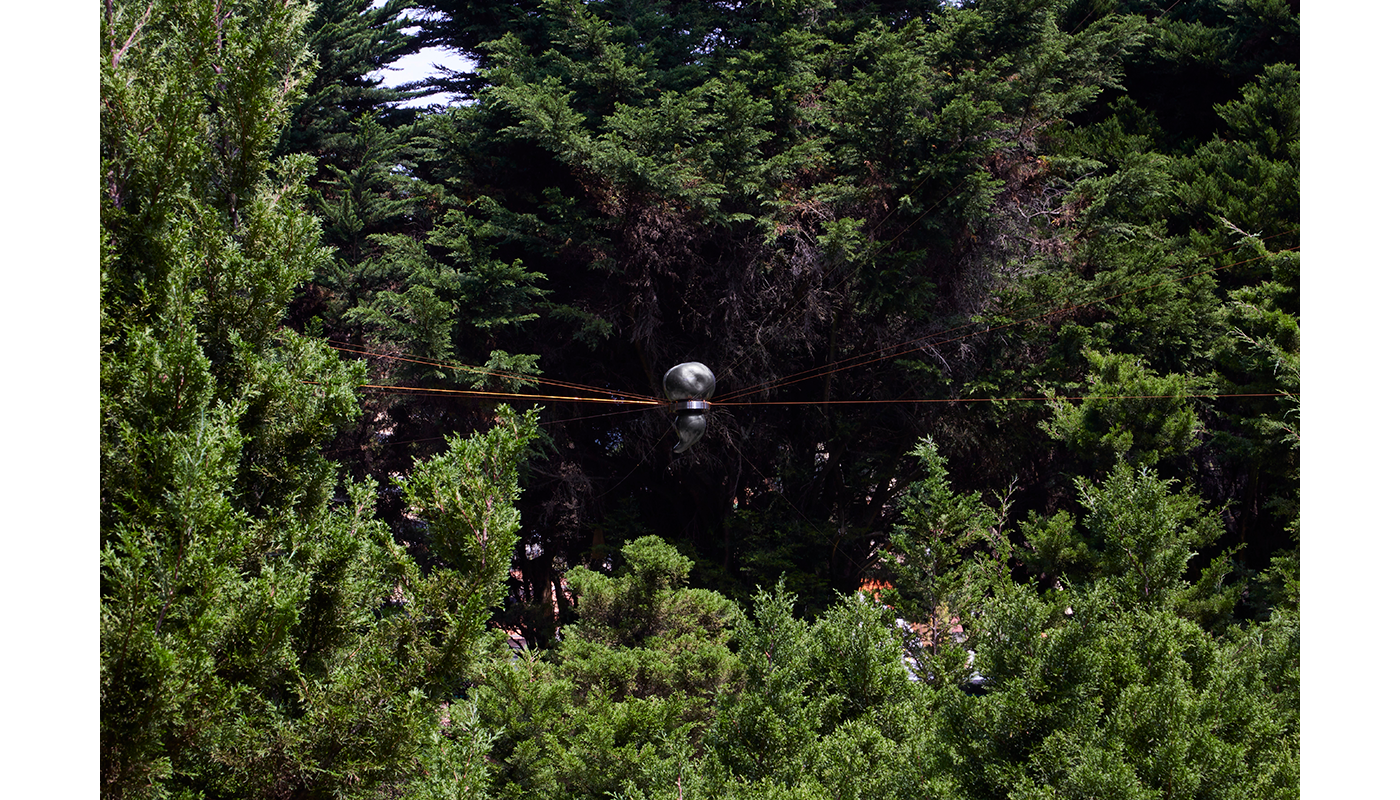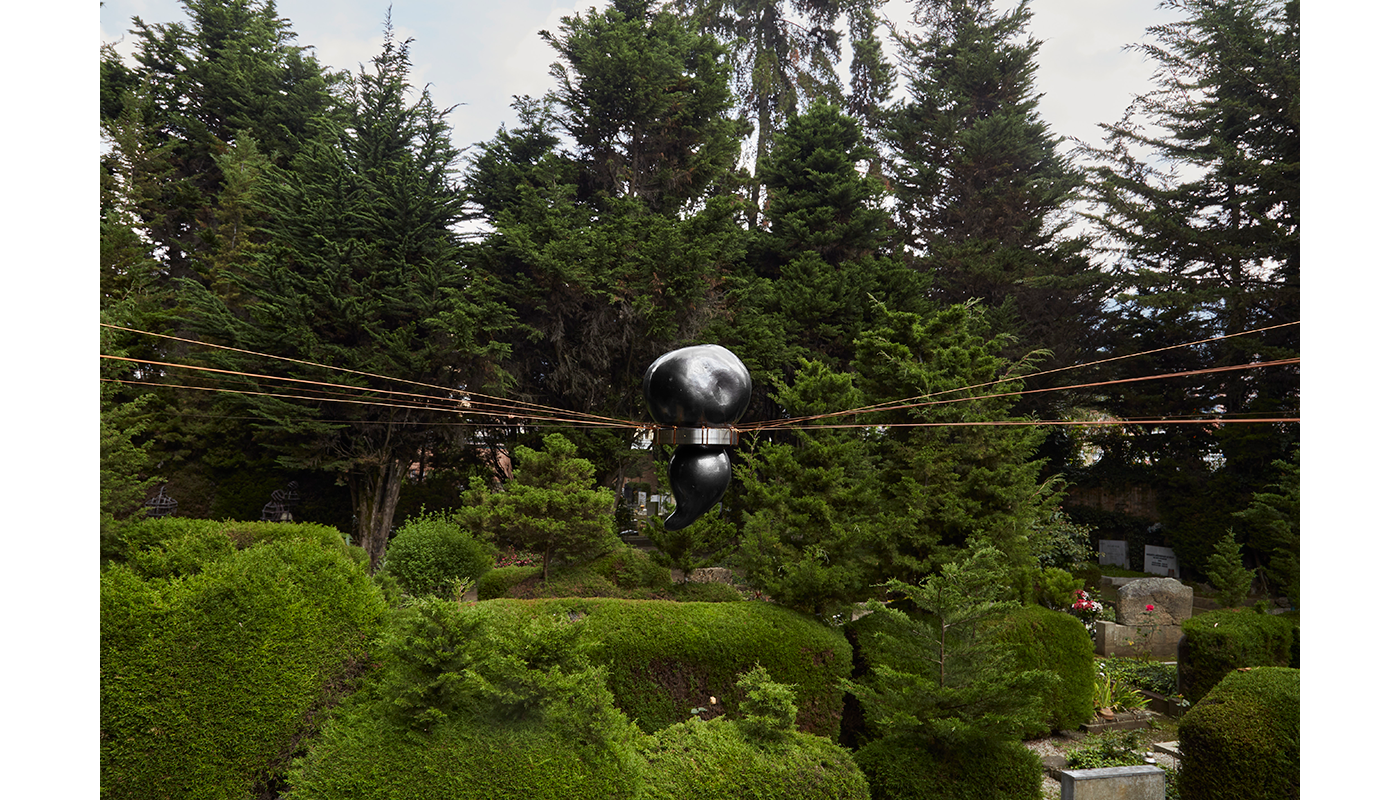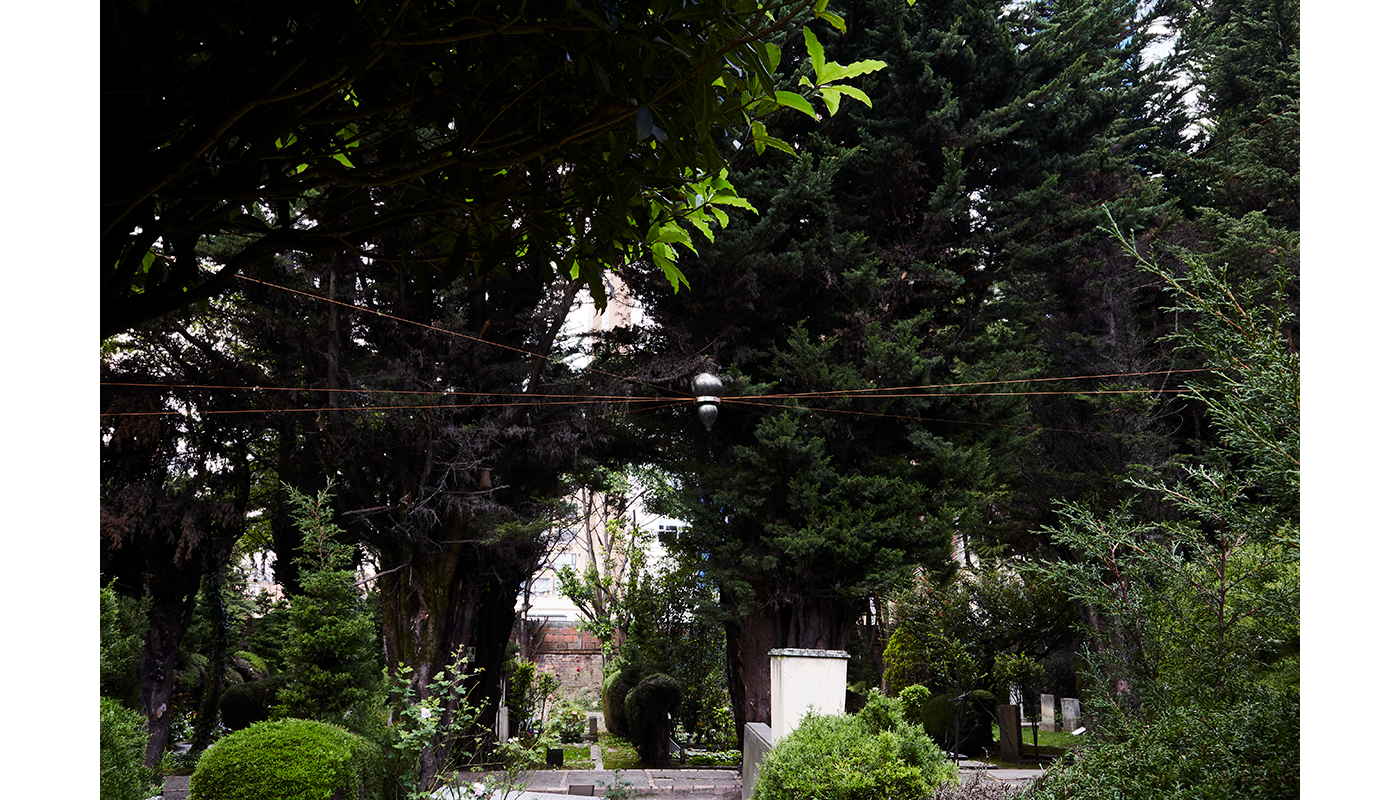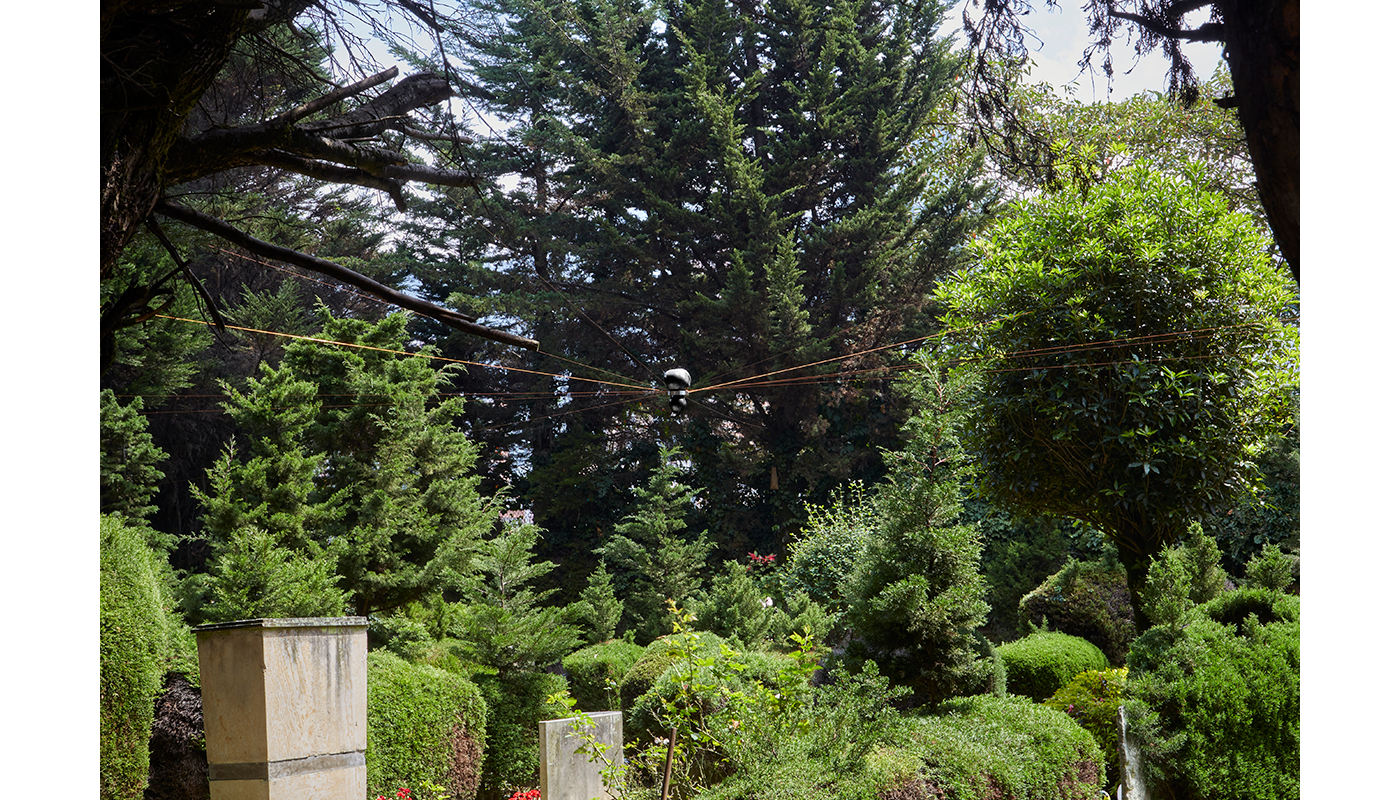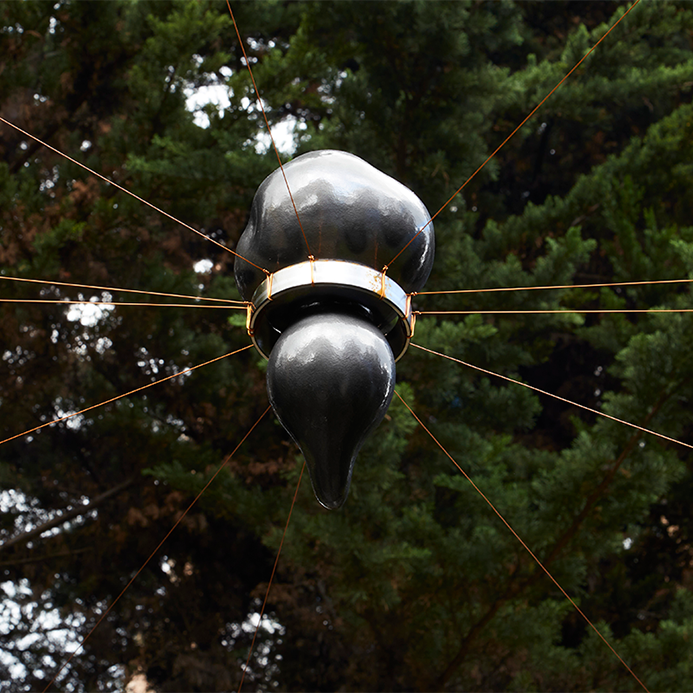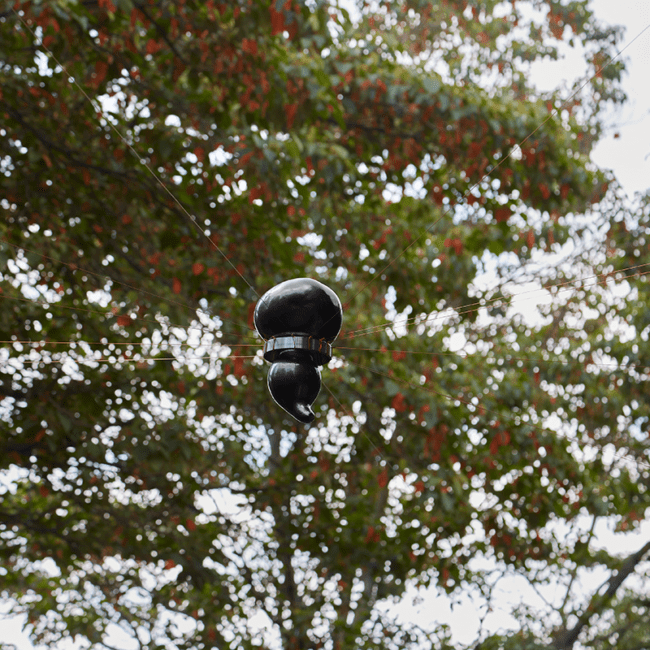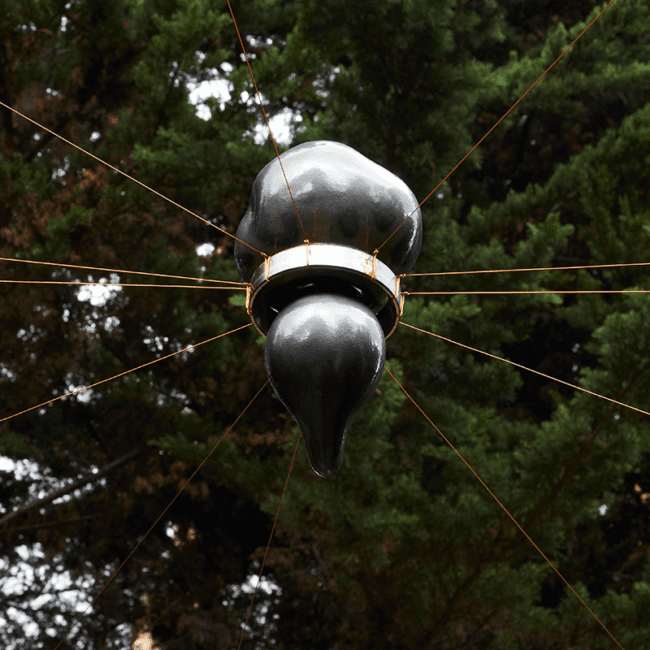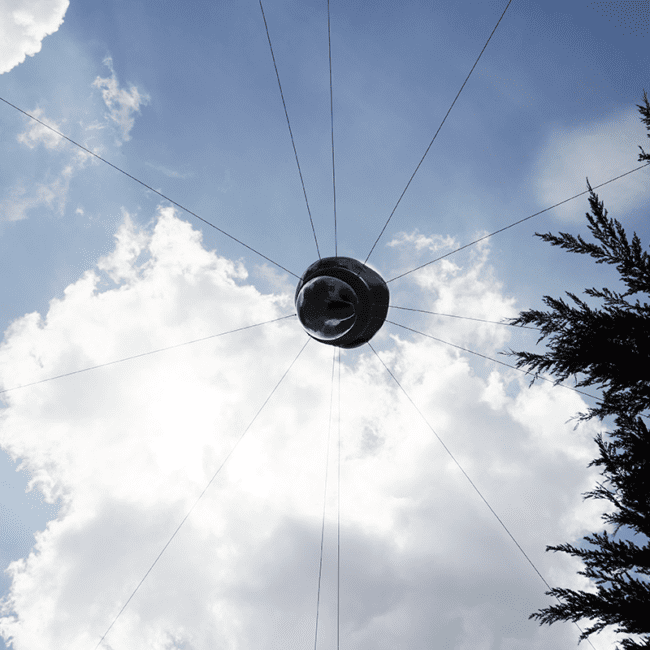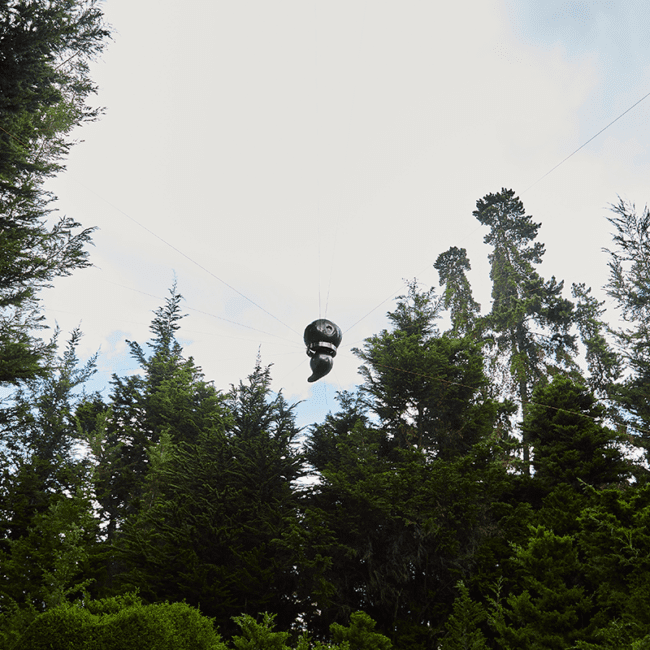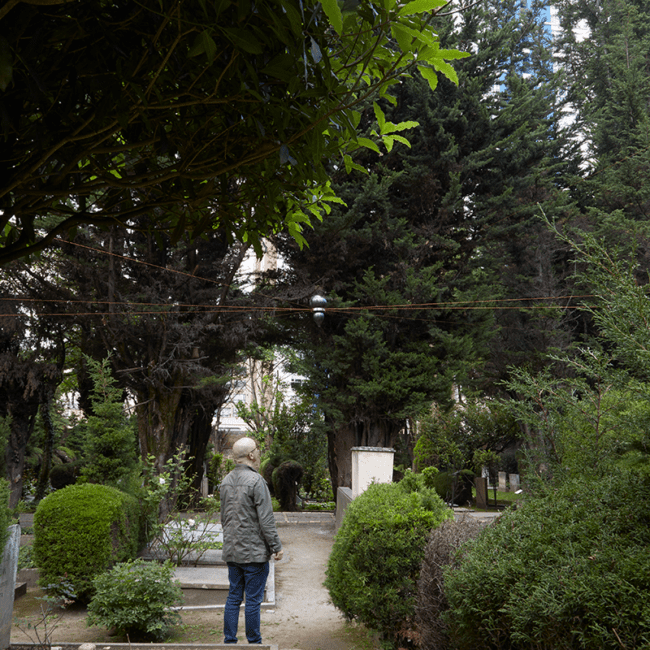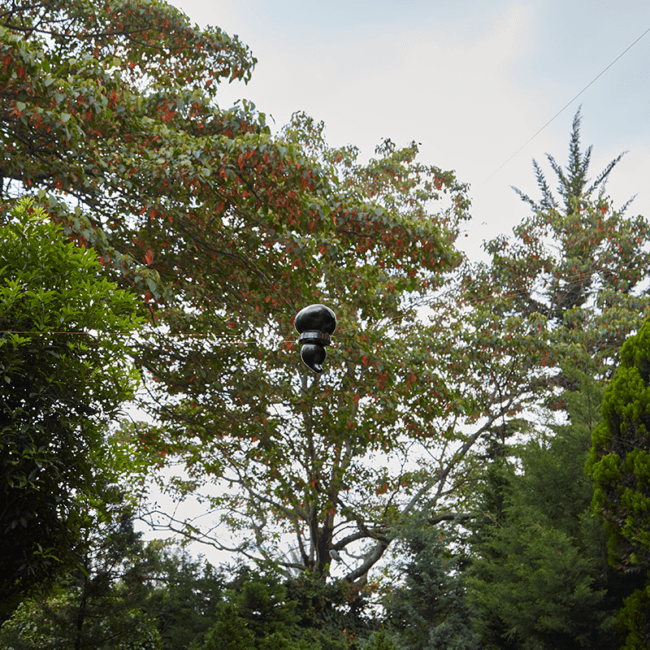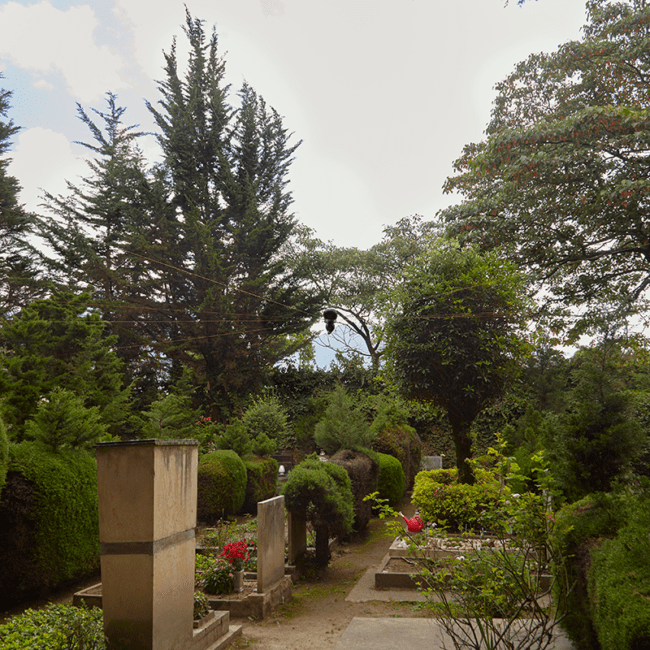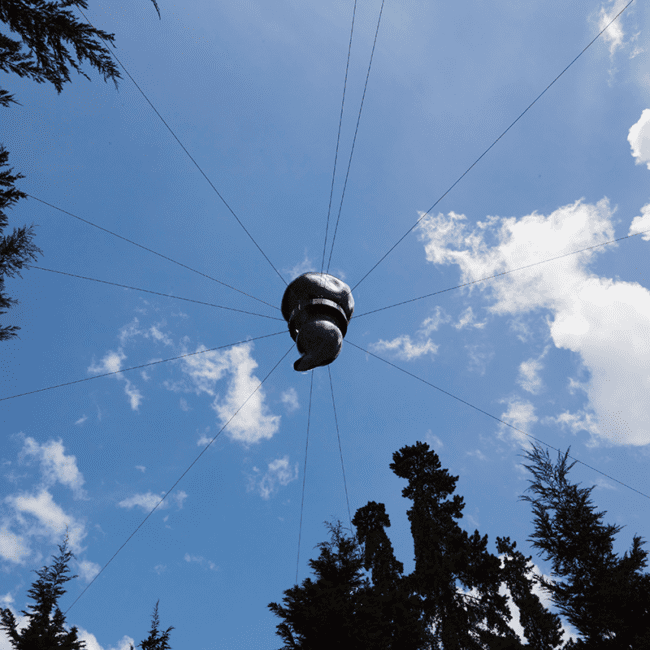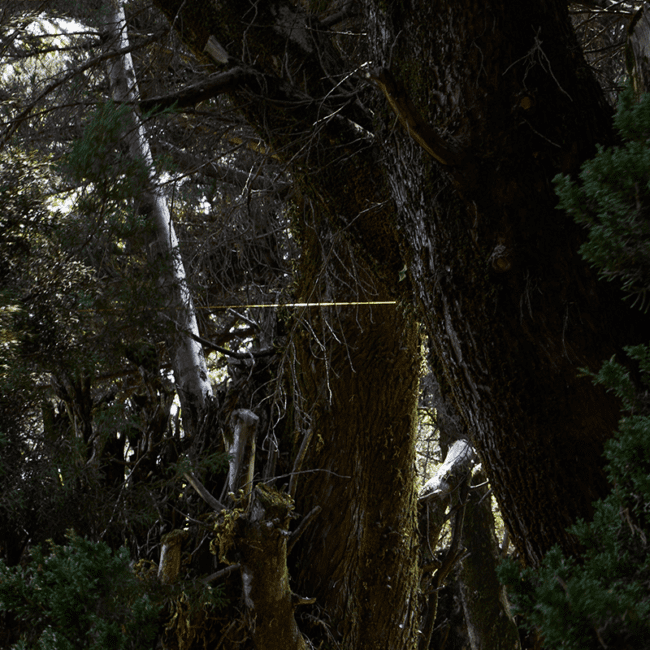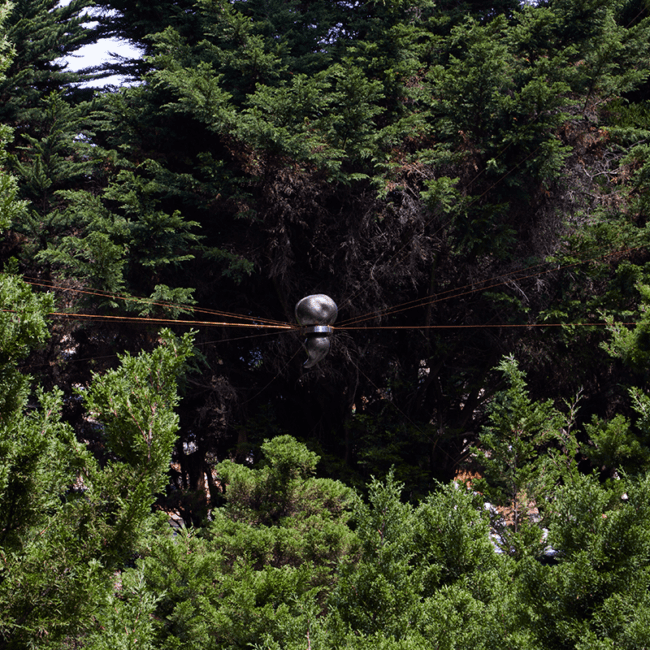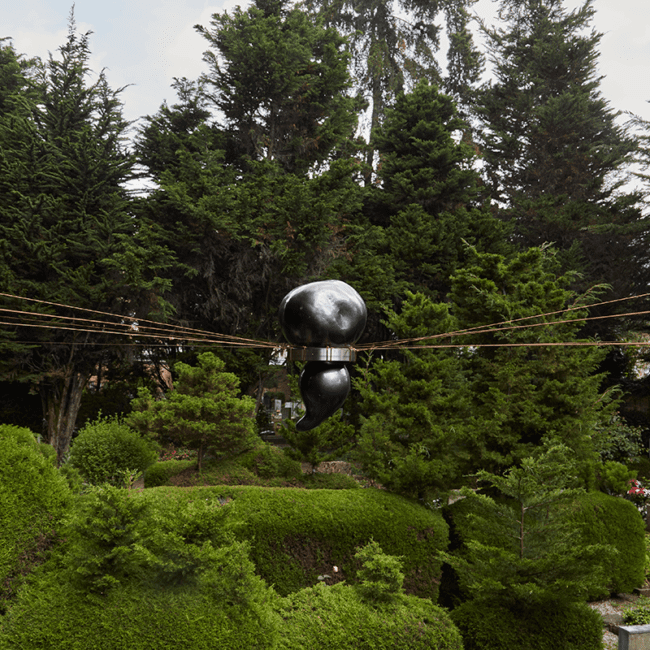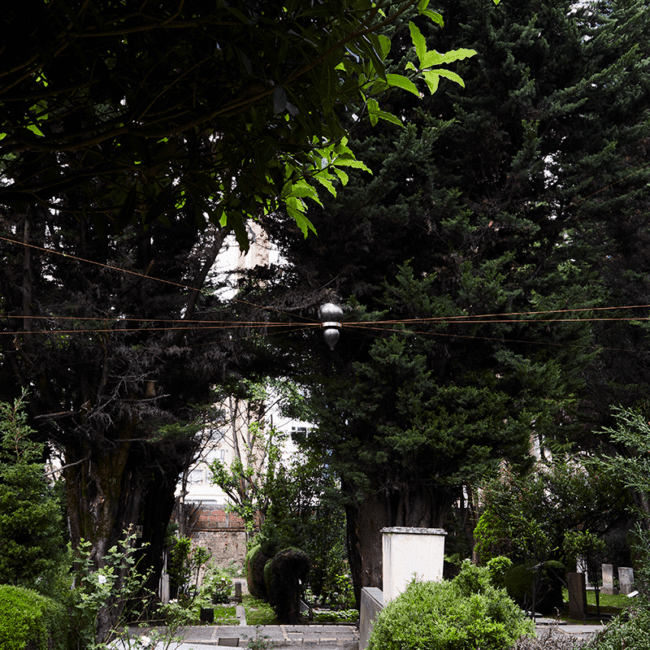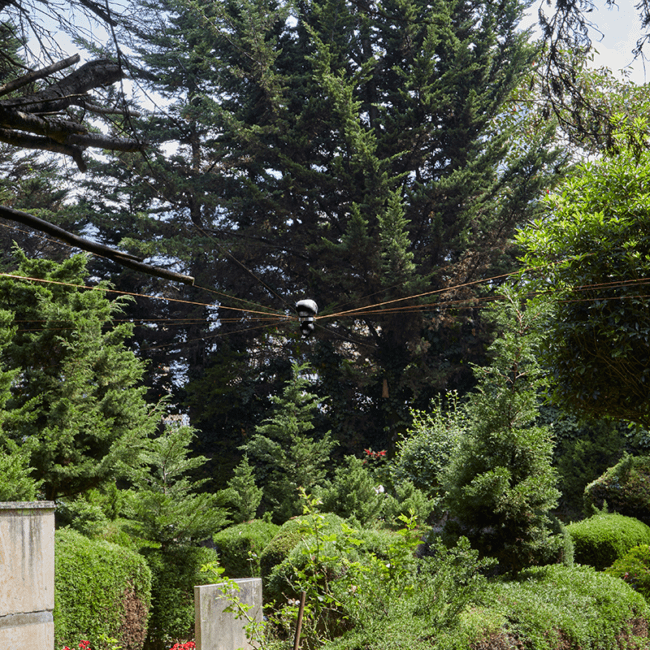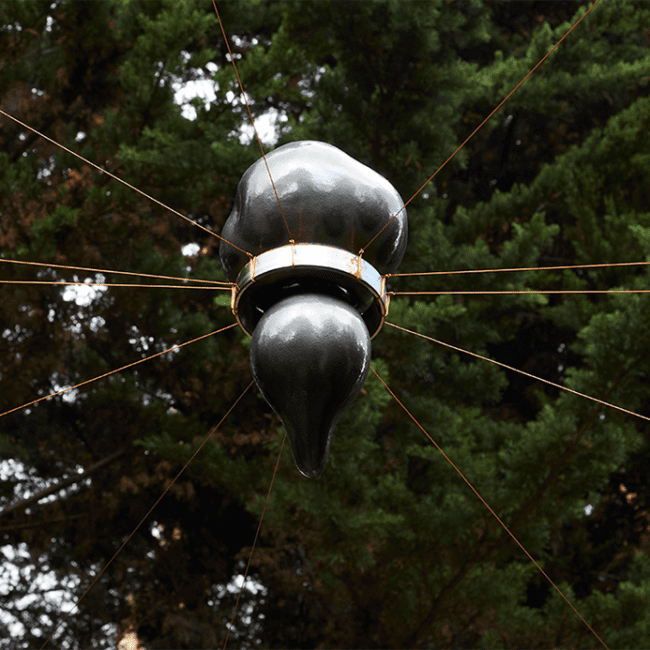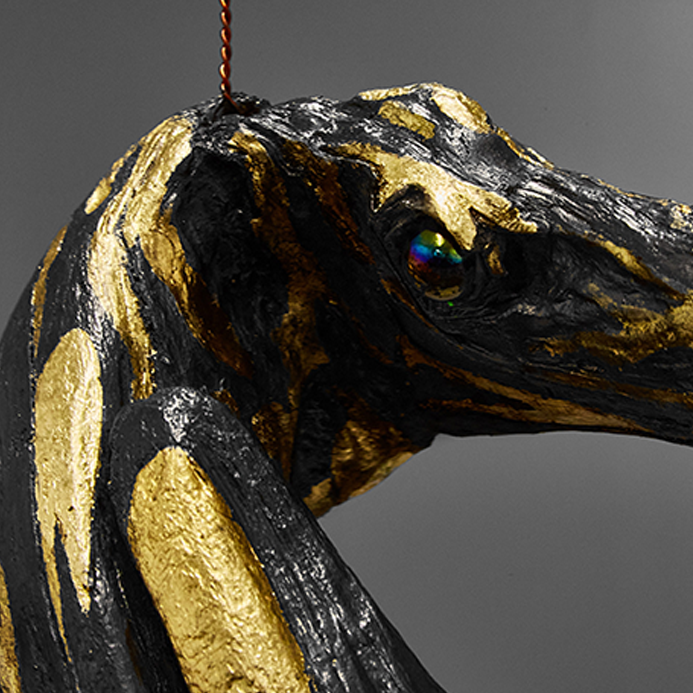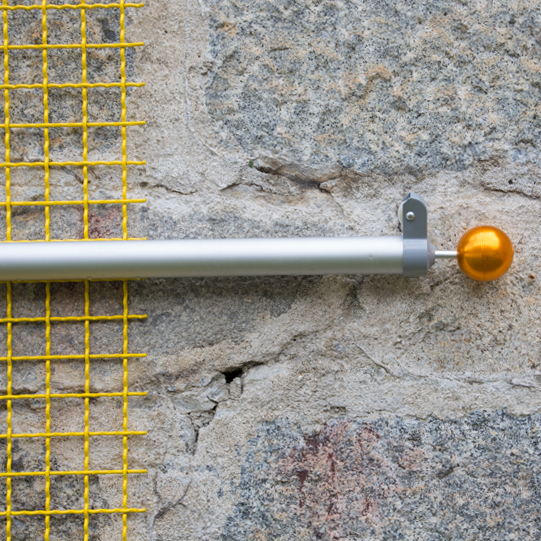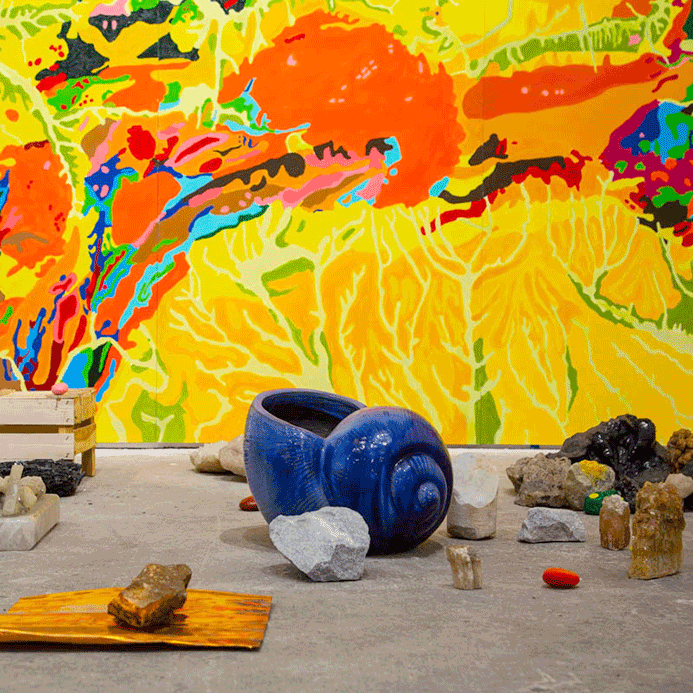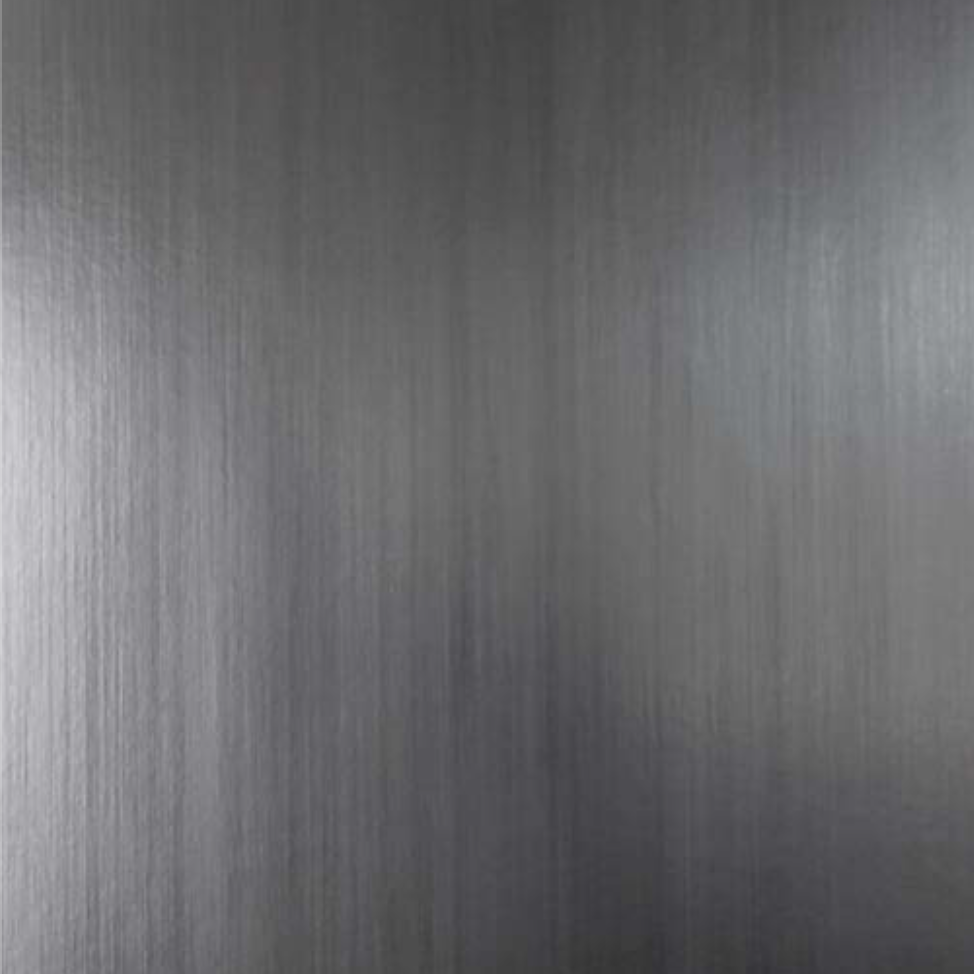Site specific installation at the German cemetery in Bogota. Dried Crescentia cujete (calabash fruit), copper wire, variable dimensions.
The German Cemetery has several subdivisions where the bodies of people of different faiths coexist, such as a Presbyterian zone that interacts with Jewish and Catholic graves. In the section most animated by its diverse community, a series of copper threads criss-cross the sky, extending from the boundaries of the cemetery to a central axis that connects and integrates them. It’s as if the shimmering flashes of these fine lines attract all the energy and directions of the space towards a centre that hovers with strangeness, a sinuous volume, the anomaly revealed by the graphite reflection and on which the sunlight bounces. This element, which resembles a meteorite halfway between the sky and the earth, is a work by Santiago Reyes Villaveces that dialogues with his previous works such as Spirit Level (2018) and Graft (2023), which explore tension, balance and botany.
The celestial suspension, which the artist calls a “fruit”, is a totumo-crescentia cujete – a tropical plant used by local communities for body care. The care is achieved by using the inside of the fruit for the well-being of the inside of the body: the viscera, the fluids, the spirit. A sculptural gesture unfolds as the organic body, covered in graphite, is suspended. A Totumo fruit, native to the region, contrasts with the cemetery garden, composed mainly of foreign plants, symbolising migrant bodies. A constant promise of transformation, hybridisation and the future, acknowledging death as a promise of mobility towards new lives, people and ways of living.
The connecting threads come from the trees – pines and cypresses – that articulate the paths and boundaries of the cemetery. Weights hang from their crowns, balancing the structure of the work of art. An exercise in synchrony between the trees, which act as cardinal points, and the rationalisation of space in the constructive elements of the burial perimeter. The work reveals the subjective, rational and physical scale and dimension of the space: the number of steps to cross it, the time spent walking, the presence that takes place in the gestures guided by the copper flashes that direct and articulate the constitutive nodes of the space – a point projected on lines supported by a network of forces.
Above the treetops, moved by the air, the elements, the rain and the moving energy that gives life and death, the work of art reflects the submerged cycle of everyday life. In this necropolis, untouched by the earth and halfway to the sky, the fruit descends or rises as a significant element of the future, of the seed – a totumo of seeds with an organic and almost erotic form that remains partially hidden. An indication that the artist is completing a cycle: from the earth, moistened by dew and rain, evaporating with the movement of life itself, into the air, warmed by the sun’s rays, crossing halfway, where each body, liquefied, allows itself to be crossed. A fruit that lands or takes off in the liminal space, much like the cemetery, which can be understood as a space halfway between the earthly and spiritual planes.
Text by: Paul Sebastián Mesa
